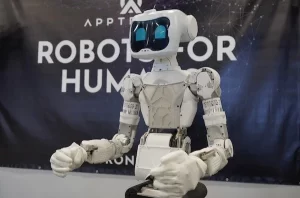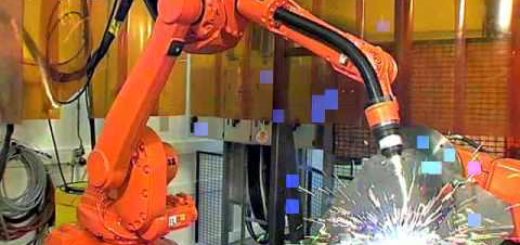Top trends on Apptronik Astra, Apptronik Astra advantages, disadvantages and features
Astra isn’t a complete robot, but rather a humanoid torso designed to be mounted on various mobile bases. This allows for flexibility in its applications. It is used for manufacturing, logistics, healthcare, and research and development. It is controlled through a teleoperation system, ensuring safety during operation and allowing for real-time adjustments.
Apptronik Astra
Astra is an upper-body humanoid robot, It is designed to be mounted on any mobile base of your choice. This allows for a high degree of flexibility and customization, making it suitable for various applications, as users can choose the base that best suits their needs.
The name Astra comes from the Greek word for “star,” symbolizing the robot’s potential to reach new heights and achieve remarkable things. It boasts 7 degrees of freedom in each arm and 4 in each hand, offering incredible dexterity and manipulation abilities. It can lift objects of various sizes and shapes, making it suitable for diverse tasks.
Apptronik plans to release the open-source software controlling Astra’s movements, allowing for collaborative development and customization by the robotics community. Although initially targeted towards tasks in logistics and manufacturing, Astra’s capabilities extend to various fields like healthcare, education, and research.
Astra is lightweight, weighing only 14kg. This makes it easy to transport and integrate into existing workspaces. Astra boasts 20 degrees of freedom, allowing for a wide range of movements and precise manipulation of objects. It can lift to 5 kg and reach a height of 2 meters.
Astra can be operated remotely using a VR headset, allowing for precise control and interaction with the environment, in hazardous or remote areas. Astra excels at teleoperation, allowing users to remotely control their arms and hands with precise movements. The VR interface for controlling Astra is user-friendly and intuitive, allowing non-technical users to operate the robot with minimal training. the operator remains safe while the robot gets the job done.
Apptronik is building a robust ecosystem around Astra, enabling users to customize it for their specific needs. By offering Astra as a service (RaaS), Apptronik aims to make advanced robotic technology accessible to a wider range of businesses and organizations, and it contributes to the global robotics landscape and showcases Egypt’s technological advancements.
Astra isn’t just a robot; it’s a platform for innovation. Its open nature allows researchers and developers to explore new possibilities in robotics, artificial intelligence, and human-robot interaction. Apptronik provides an open-source software platform for Astra, allowing developers to customize and build applications for the robot.
Astra is designed to be updated and improved. With its modular design and open-source software, it has the potential to evolve significantly over time. Astra is more than just a fun and versatile robot. It has the potential to revolutionize various industries by automating dangerous, tedious, or repetitive tasks. From healthcare and manufacturing to logistics and construction,
Advantages of Apptronik Astra
Astra allows for customization and flexibility in applications. Astra can be mounted on various mobile bases, making it suitable for diverse specific tasks and environments. Astra’s 20 degrees of freedom and 5 kg lifting capacity enable it to perform a wide range of tasks, including precise manipulation of objects, assembly, and transportation.
The open-source software platform allows developers to create custom applications for Astra, and contribute to the robot’s development, It is designed for continuous updates and improvements, ensuring adaptability to changing needs and technology advancements.
Teleoperation provides a secure and controlled environment for operating Astra, Remote control minimizes risks associated with human interaction, ensures safety, and allows real-time adjustments during operation. Astra is suitable for various applications, from industrial automation to healthcare and research.
Disadvantages of Apptronik Astra
Astra relies on external mobile bases, restricting its independent movement capabilities. It requires further development and testing before widespread adoption. Remote control can introduce latency and hinder real-time responsiveness, potentially impacting task performance in certain situations. As a relatively new technology, Astra requires further development and refinement to reach its full potential.
Astra’s current availability might be limited, making it difficult for widespread adoption. Astra is not widely available and may be expensive to purchase. The cost of acquiring and maintaining Astra might be high, especially for smaller organizations with limited budgets.
Potential safety risks associated with human interaction and malfunctions need to be addressed through careful implementation and safety protocols. Operating and customizing Astra requires technical expertise, which might not be available for all potential users.
While teleoperation enhances safety, potential malfunctions or security breaches could still pose risks. The use of humanoid robots raises ethical issues, such as job displacement, automation bias, and potential misuse, which need to be addressed.
You can follow Science online on YouTube from this link: Science online
Loona robot review, advantages, disadvantages and what can Loona do?
Sophia robot review, features, use, advantages and disadvantages
Educational robotics, Robot teachers, Social robots review, features advantages & drawbacks
Humanoid robots use, risks, advantages and disadvantages




